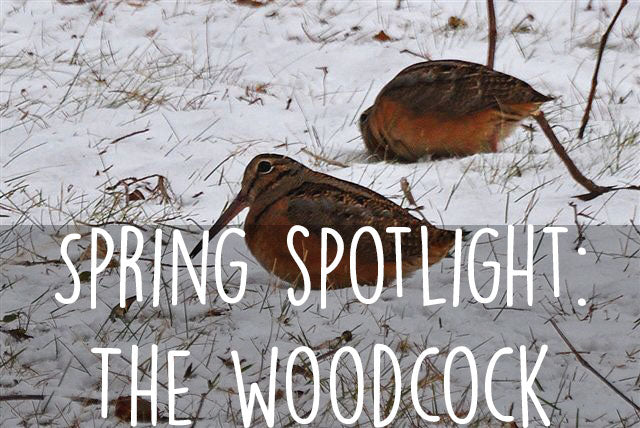Offer
Provide additional details about the offer you're running.
Provide additional details about the offer you're running.
Provide additional details about the offer you're running.

To begin slightly off-topic, this week’s video and blog was brought to you entirely from our Facebook Group. We opened the group a few years ago now and today it serves as a place for birders from across North America to congregate, share pictures, ask questions or simply share their favourite joke of the moment.
If you haven’t joined us already, we invite you to join us in the Friends of Gilligallou on Facebook and share your birding story. As we stated above, this blog and the video below were derived from a question that spurred a conversation in the group about a peculiar little bird known as the American Woodcock.
After chatting with members about the sounds and where to find them, we thought it would be a great idea to dive a little deeper, allowing everyone else to get to know this small but entertaining bird.
Where to find the American Woodcock
A bird of the east, this little bird can be found scattered throughout much of the eastern United States during most seasons of the year but is migratory in nature. As such, during the spring and summer breeding season, we are delighted to hearing and spotting this small game bird.
There is no better time than right now to catch a glimpse of these birds as they become wildly active in their attempts to attract a mate. Performing what is known as their “sky dance”, these birds will perform a wonderful display flight, typically around dusk while letting out their signature “buzzy” calls.
Locating these birds otherwise requires having a detailed look at the forest floor where they blend in best against leaf litter. Be sure to move slowly and always keep an eye out for these little birds, outside of the spring months, they can be extremely difficult to spot in the field.
Identification
Luckily, if you get the chance to spot one of these wonderful birds, identification can be quite easy as they are truly one-of-a-kind in appearance. Plump and small birds, woodcocks are equipped with a very long bill used to probe the soil in search of insects and bugs and is easily their most identifiable feature. Their plumage lends itself well to camouflage in a number of different backdrops. The mottled shades of brown, mixed with black and grey tones allow this small bird to become instantly illusive to birders and prey alike.
Vocals
Our entire conversation in our Facebook group was spurred on a question regarding an odd call one of our members was hearing. After sharing details of a nasal, buzzy peent-type sound, we were quickly able to identify the woodcock as the culprit.
These birds will use these calls right now in preparation for their sky dance, often starting on the ground with their signature call before spiraling up into the evening sky to delight the nearest female.
Feature Image: Tom Tetzner/USFWS
High Quality Blend

